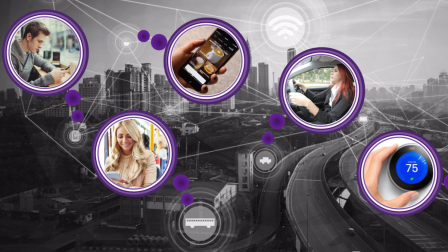Amplero enlists machine learning to leverage influencer marketing
The optimization platform’s new feature makes tested offers to customers who have lots of friends and followers.
Influencer marketing tries to leverage a popular person’s network of friends and followers.
This week, optimization platform Amplero is announcing an enhancement to its platform that employs machine learning to power influencer marketing for brands whose customers commonly form networks of users.
Called Influencer Optimization, the new approach identifies users with substantial networks of contacts, and then uses machine intelligence to make the least offer that would generate the biggest ripple.
Chief Product Officer Matt Fleckenstein outlined a possible use case for me.
Let’s say Xbox is coming out with a new version of its “Gears of War” video game, he said. It knows that Player A frequently plays with a large group of friends, and so the Amplero platform identifies this player as someone who can have a ripple effect. Amplero works as an kind of intelligent advisor to a marketing platform that actually executes its recommendations.
Amplero also determines that, based on its previous testing of various offer combinations in similar situations, a coupon providing 10 percent off the next Gears would likely interest Player A. A ripple effect could be created by adding an additional percentage point off for every other person that Player A gets to buy the game.
The targeted influencer and the network of friends are mostly authenticated users, Fleckenstein said. That is, they’re identified as specific people, and it’s assumed here they’ve granted the necessary permissions when they signed up to play online.
Of course, these incentives are similar to common referral and loyalty offers. And many marketing technology vendors use machine learning to determine which customers are — or will be — their best customers.
What differs about Amplero’s approach, Fleckenstein said, is that the machine learning is continually testing the lowest offer that will deliver results, as well as figuring out the targeted customer’s network of influence.
He said the closest competitor to this approach is Optimove. Its “self-optimizing marketing campaigns” similarly rely on machine learning to guide its offers and to continually run tests.
‘Not writing rules’
Both companies, he said, “are not writing rules,” but instead are saying: “Here are my KPIs [key performance indicators] and here are some offers.”
Then, Fleckenstein said, the marketer essentially tells the platform: “Figure out the rest.”
This effort to identify and energize influencers won’t necessarily work with every kind of customer-facing business, since it’s very difficult for a business to know how many people you influence if you’re, say, a Target customer. The business could analyze your publicly available social networks, but that’s not what’s happening here.
Amplero focuses on such service industries as banking, gaming, telco and computer software — businesses built on payments to others, gaming buddies, messaging and collaboration.
This Influencer Optimization approach has been featured in a Columbia University Business School study, which found a 28 percent “social multiplier” in one trial of a mobile carrier, even when no offer was made to the influencer’s network. In that case, influencers were identified by their mobile contacts, who tended to be heavy voice and data users.
From a summary of the report:
“Using a randomized field experiment involving nearly 6,000 customers of a mobile telecommunications provider, we find that the social connections of targeted customers increase their consumption and are less likely to churn due to a campaign that was neither targeted at them nor offered them any direct incentives.
“We estimate a social multiplier of 1.28. That is, the effect of the campaign on first-degree connections of targeted customers is 28% of the effect of the campaign on the targeted customers. By further leveraging the randomized experimental design we show that, consistent with a network externality account, the increase in activity among the non-targeted but connected customers is driven by the increase in communication between the targeted customers and their connections, making the local network of the non-targeted customers more valuable.
“Our findings suggest that in targeting CRM marketing campaigns, firms should consider not only the profitability of the targeted customer, but also the potential spillover of the campaign to non-targeted but connected customers.”
Marketing Land – Internet Marketing News, Strategies & Tips
(14)



